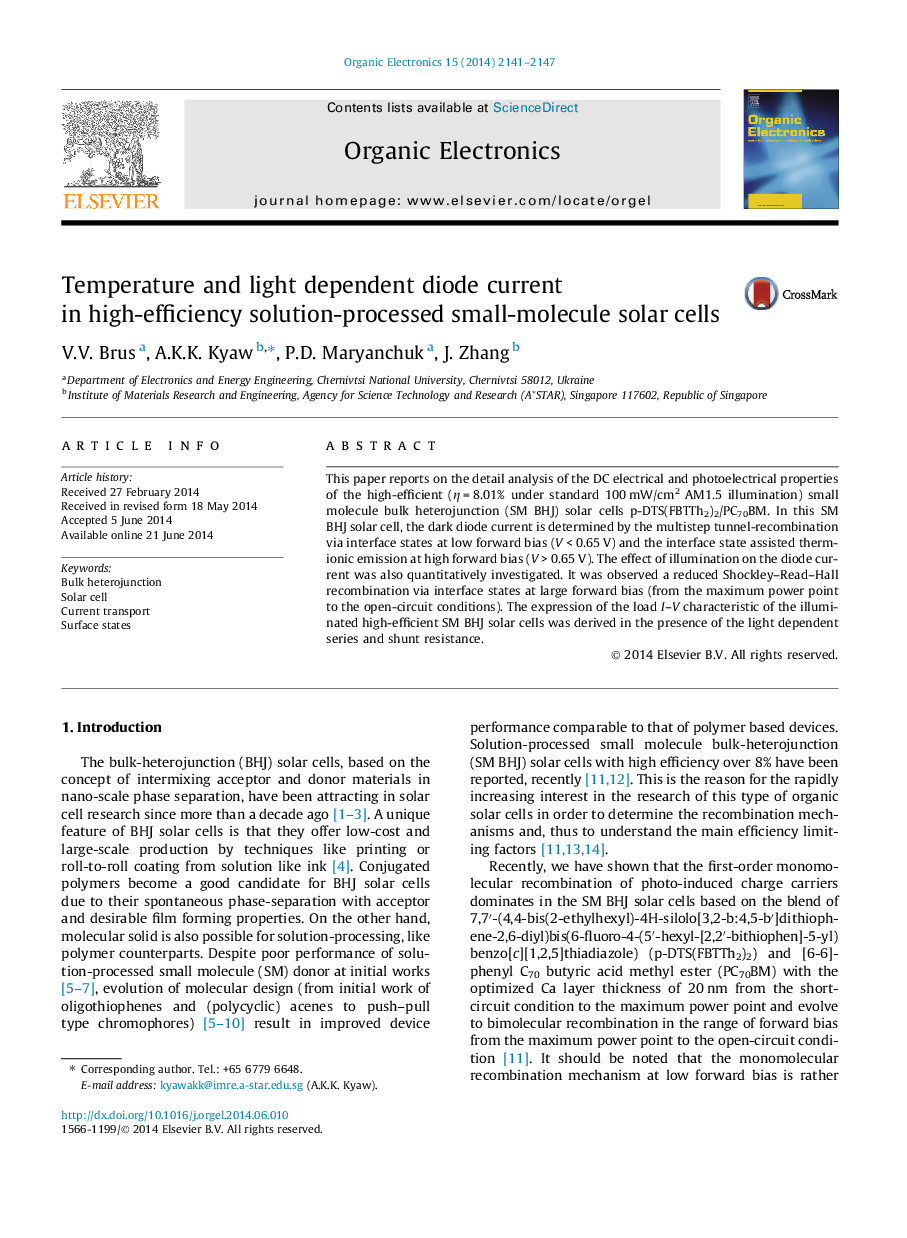| Article ID | Journal | Published Year | Pages | File Type |
|---|---|---|---|---|
| 1264903 | Organic Electronics | 2014 | 7 Pages |
•The positive temperature coefficient of the rectification ratio was shown.•The dominating diode current mechanisms were determined in the dark.•The illumination reduces the contribution of the Shockley–Read–Hall recombination.
This paper reports on the detail analysis of the DC electrical and photoelectrical properties of the high-efficient (η = 8.01% under standard 100 mW/cm2 AM1.5 illumination) small molecule bulk heterojunction (SM BHJ) solar cells p-DTS(FBTTh2)2/PC70BM. In this SM BHJ solar cell, the dark diode current is determined by the multistep tunnel-recombination via interface states at low forward bias (V < 0.65 V) and the interface state assisted thermionic emission at high forward bias (V > 0.65 V). The effect of illumination on the diode current was also quantitatively investigated. It was observed a reduced Shockley–Read–Hall recombination via interface states at large forward bias (from the maximum power point to the open-circuit conditions). The expression of the load I–V characteristic of the illuminated high-efficient SM BHJ solar cells was derived in the presence of the light dependent series and shunt resistance.
Graphical abstractFigure optionsDownload full-size imageDownload as PowerPoint slide
